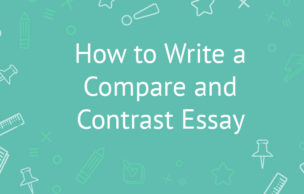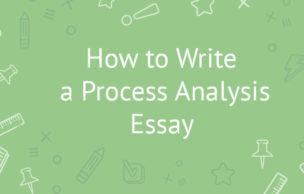How To Write a Descriptive Essay

You definitely have heard that a picture is worth a thousand words. But, when it comes to essay writing, a thousand words is what gets you a good grade! How do you find the right ones, then? Simple — you describe! Mastering the ins and outs of descriptive writing will help you paint a picture — with words. The main trick here is to pay close attention to every tiny detail and deal only with subjects and situations readers can relate to. If you think of it, all established authors, from Shakespeare to Rowling, have used this simple tip to their benefit.
Descriptive Essay: The Basic Info
Obviously, the purpose of a descriptive essay is to describe. If you want to dig deeper, you should try to create a very vivid picture in the reader’s mind. Appealing to the five human senses (smell, touch, taste, sight, and hearing) is the best call here. Sounds impossible on paper? Thinks of all the works of literature you’ve read and try to recall how famous authors create their settings. They do their best to get all of those five senses involved!
Most commonly, a descriptive essay describes some of the following:
- Object
- Person
- Memory
- Place
- Experience
As you can see, you can appeal to the human senses to describe some of the above. If it helps, think of your paper document as a canvas. Here, you are to paint a very vivid, detailed picture the reader will be able to relate to.
Still, remember that a descriptive essay is also an academic paper, so it should serve a purpose. You cannot describe for the sake of describing. A good example of an academic paper with purpose would be an event that influenced you, a certain objective of significance in your life, a person you look up to, etc.
Topics Ideas for a Descriptive Essay
Object
- Describe a symbolic meaning of a single everyday object in your life
- If your heritage could be just one object, what would it be?
- Describe an object that has a sentimental value to you.
- Describe average human traits to an alien
- Describe a person who influenced you the most
- How is your best friend different from other peers?
- What makes a memory precious?
- What is your most precious memory?
- How does the setting impact you precious memory?
- Describe the most beautiful place you’ve been to.
- Describe an imaginary, ideal place for you.
- What would be an ideal place to build a city?
- Which event influenced you the most?
- What is your first experience with a lie?
- Which moment defines your present-self?
Note: if you read through the topic idea carefully, you probably have noticed that some of them (i.e., memory and experience) are related. Not only it is ok to mix certain topics — like events and memories, but in fact, it is highly appreciated. Remember, your goal when working on a descriptive essay is to appeal to as many human senses as you possibly can. Mixing events, people, and memories in your narration can be really helpful — provided, the structure remains logical.
Creating a Descriptive Essay Outline
All experienced writers create an outline before they actually sit down to write, and if you really want to ace your essay, you should do that, too.
Just like any other academic paper, your descriptive essay will have an introduction, several body paragraphs, and a conclusion. But before you even get to that, you will have to think of a topic. Do not put it aside — finding a perfect topic to describe might take you some time, so you better start brainstorming as soon as you are assigned a paper.
Introduction
- Hook: The first sentence is your attention-grabber. Try to hook the reader, intrigue your audience. This will give your essay an ideal start!
- Topic: Introduce the event or a person you are writing about. Stay brief, leave all the juicy details for later.
- Background info: Here, you can slightly elaborate on your topic, but remember to stay discreet. Leave all of the specific details for the body paragraphs. Keep intriguing the readers!
- Appeal to the senses: if you do not want to lose your reader’s attention, appeal to at least two-three of the five senses by the end of your introduction. Sure, if you can do more, it’s going to be even better, but — once again — remember that the intro is a very small part of your work that gives only a brief overview of the topic.
Body Paragraphs
The number of body paragraphs will depend on the topic you choose. Sometimes, a 2-3 body paragraph structure is enough to fully describe an object or an event. In some other cases, you will need five or even more paragraphs. In any case, follow these tips to ace your essay:
- Start with something interesting: first impressions are everything, so if you really want to keep your readers entertained, start each of body paragraphs with an exciting point.
- Appeal to senses in plot development: we cannot stress this enough — appeal to senses as much as you possibly can. This is exactly what makes a good story. If you can use all of the five senses in one paragraph, do it! Do not limit yourself to just one or two. And, of course, use the same logic in all of your subsequent parts.
- Operate the facts: sure, this is not a scientific work, but it doesn’t mean you should avoid factual information. Senses are cool, but it’s the events that make up a storyline. If for example, you are describing an object, include some background information about it. The same goes for people in your narration.
- Keep the suspense: even if you can grab the reader’s attention with a hook, be prepared that keeping it is a challenging task. Ideally, try to build up to an impressive finale. Build the suspense — each new line of your story should involve the reader more and more; otherwise, you simply risk losing their attention.
Conclusion
- Reflect: do not forget to reflect on your purpose. No matter how good or vivid your description may be, readers will still want to know why it is important in the first place. Don’t describe just for the sake of describing — give your story meaning.
- Stress the significance: sometimes, the significance of a story or an object may seem clear to you as the writer. It will not always be so for your audience. Make sure you stress the importance of your story enough for the reader to understand.
- Impress: the hook of your story can be challenging enough; but, an impressive conclusion is even more complex. Wrap it up with a powerful statement that will not escape the reader’s mind right after he/she finished reading. Yes, this stage will need some extra thinking, so do not rush to put a stop to your writing.
Extra tips and tricks
- Stick to chronological descriptions: the best tip when working on a short form of writing (which is your essay) is to keep things chronological. Shifting from the present to the past and then jumping ahead to the distant future will simply confuse your readers.
- Write with style: use imagery to highlight your writing style. Metaphors, similes, even paradoxes — whatever suits you best.
- Senses, senses, senses: Imagery is a perfect way to appeal to the senses. Metaphors and similes can be especially useful here.
- Get a second opinion: you will never know what kind of impression your essay creates unless you ask for a second opinion. Get one of your fellow students to look at your paper. Remember, even if you did a top-notch job, there is always some room for improvement. A second opinion will surely let you see small blemishes in your work.
Still worried about descriptive essay writing?
Ok, it's understandable that you might still doubt your descriptive writing skills (or simply want to enjoy a little bit of 'crazy' in your college life). No worries, your descriptive essay is safe with us!
Elite Essay Writers is one of the best custom services that truly matches its name. When you assign any of your papers to us, you can stay certain that the result will get you the grade you want — and for a fair price on top of that! In any case, if you are still worried about the descriptive essay, time to get moving!





